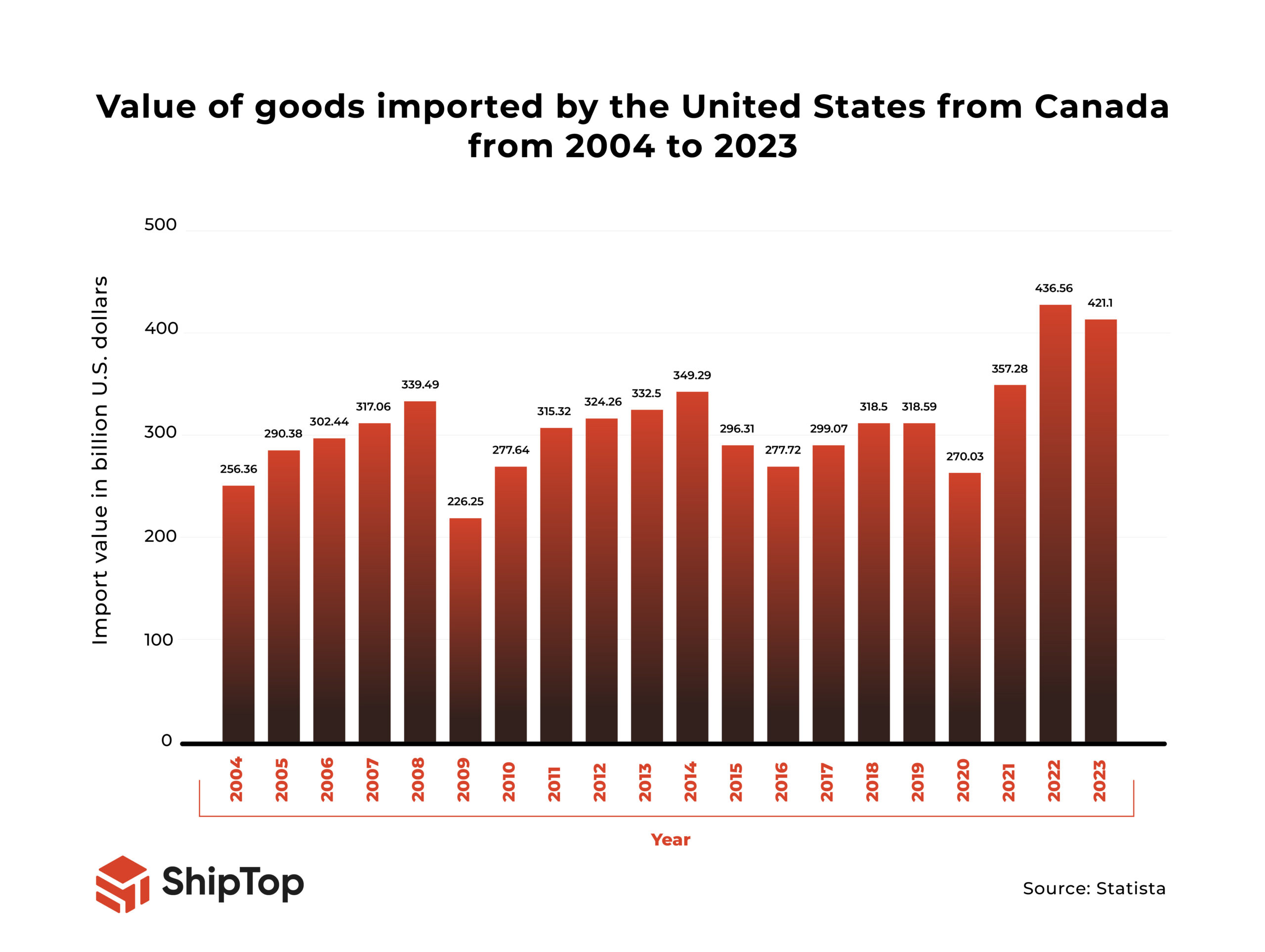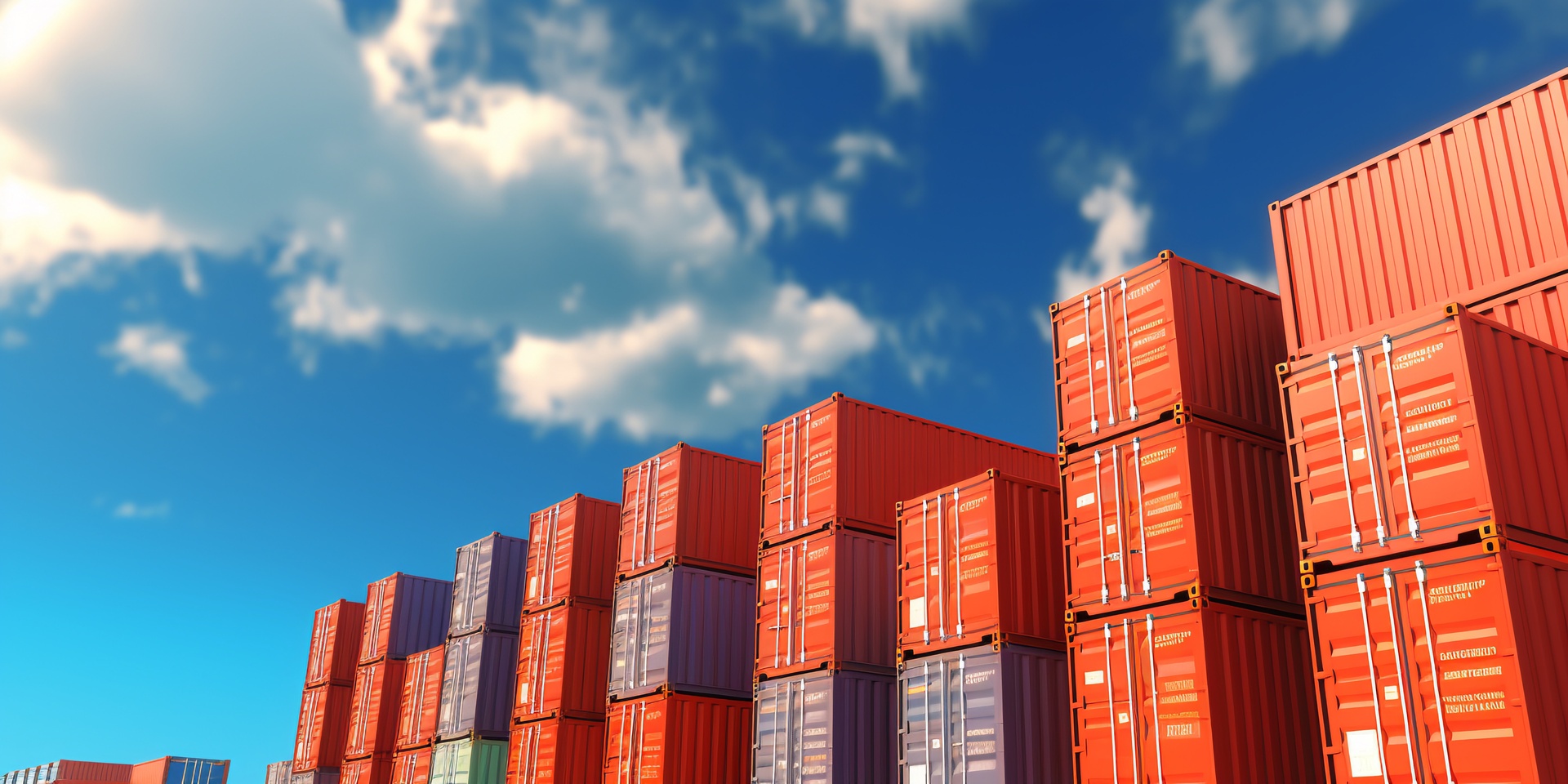There’s a long tradition of trade relationship between Canada and the United States, and it’s by now evolved into a robust, almost symbiotic system that eCommerce can’t help but benefit from. As of 2023, the overall value of goods imported from Canada to the US reached $421.1 billion. What’s interesting, though, is that if we look at the metric in perspective, there’s a distinctive surge after 2021. Why? In 2019, Section 321 of the Tariff Act was modified to include shipments below $800 for duty-free entry. While 2020 was a turbulent year (we remember why), the effects were postponed until 2021, and here we are now.
This illustrates how small eCommerce shipments matter in the grand scheme of things, and eCommerce has every reason to love Section 321. This provision is an attractive option for companies seeking to reduce costs and streamline their import processes. By leveraging Section 321, not only do businesses save on duties but also benefit from faster customs clearance, potentially leading to improved customer satisfaction through quicker delivery times.

How Section 321 works
As mentioned, Section 321 allows for duty-free entry of low-value (de minimis) shipments valued at $800 or less into the United States (one person on one day). Most consumer goods are eligible, except for tobacco, alcohol, and what goods are subject to other agencies like FDA (these will require additional documentation).
Filing for Section 321 requires product information, total value of the shipment, country of origin, and the recipient. There are nuances about ACE eManifests, so companies really need experts on board (in-house or not) to fully navigate the provision.
The benefits outweigh the worries, though, especially when Canada is part of the equation. The reason is, companies that import overseas products into Canada first can claim duty drawback (i.e. get back the money spent on Canadian custom duties) for the items they export to the US, using Form K32 of the Canada Border Services Agency. This largely reduces the cross-border shipping costs.
Location matters: Why Canada?
It’s not just the duty drawback that makes Canada a good eCommerce logistics hub. Another important thing is the location of fulfillment warehouses.
You’d typically want the warehouses to be closer to the customers, basically at the start of the last-mile stretch. This means lower shipping fees, and faster delivery times – the prerequisites of customer retention. If you look at the map of Canada, its best warehouses are as close to the border as nearly everything else in the country (except for the picturesque scenery, which eCommerce has nothing to do with).
The border is quite long, too, which is perfect since multiple locations allow for better inventory distribution, reducing the risk of stockouts, and generally providing for a resilient supply chain.
As a fulfillment partner for multiple eCommerce brands, ShipTop makes daily shipments from Canada to the US. It’s our usual routine by now, and the results are indistinguishable from what you’d see with a US-based warehouse. Same delivery times, lower costs, same customer satisfaction levels.
The cross-border logistics potential of Toronto and Vancouver
Our primary fulfillment centers are in Toronto and Vancouver, and they are the optimal choice for a number of reasons.
Toronto has a good strategic location overseeing both the US Northeast and Midwest, and it’s also home to Canada’s busiest airport (Toronto Pearson International), as well as other transport infrastructure. There’s also no lack of skilled personnel for hire.
On the other side there’s Vancouver, which is a major Pacific port, thus being in the same sprawling ecosystem as Asia and the US West Coast. The different transportation networks (air, sea, rail, road) are very closely integrated, so you’ve got enough room for creativity in terms of logistics. Also, Vancouver boasts favorable climate conditions, meaning there are fewer chances of weather-related disruptions to transportations and logistics in general.
Both cities are sufficiently close to the US border, which makes Section 321 a full advantage (essentially plugging the border crossing into the last mile delivery).
How ShipTop optimizes fulfillment using Section 321
At ShipTop, we’ve been helping businesses operate under Section 321 for a while now, and have a full arsenal of what’s needed to reap the main benefit: cost-efficiency. Besides a network of fulfillment centers and Section 321 expertise, we provide an advanced digital platform for improving inventory management. As practice shows, inventory visibility is a major factor in cross-border shipping, allowing eCommerce brands to plan more flexibly while delivering to the US.
As mentioned, our Vancouver and Toronto warehouses are 1 hour drive from the border, meaning the shipments cross into the US within a day to be handed to USPS, UPS, or DHL eCommerce for the actual last mile delivery.
You can learn more about how we can handle your Section 321 strategy by contacting us here.






